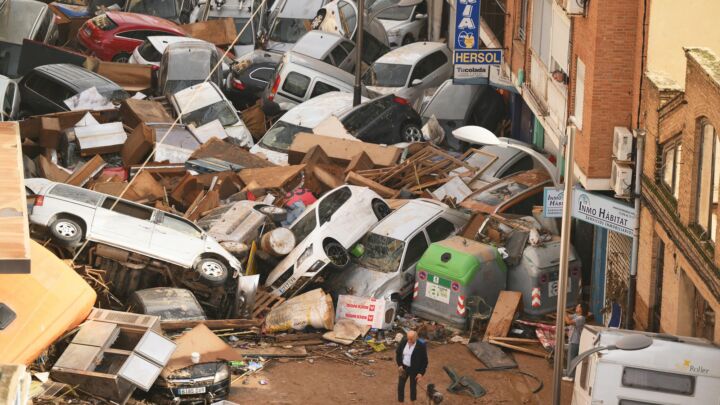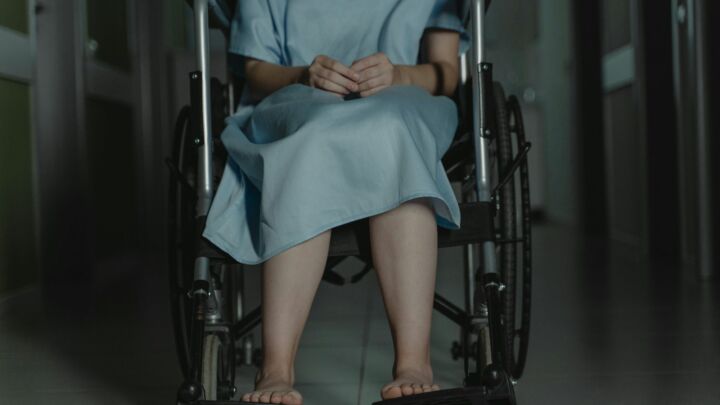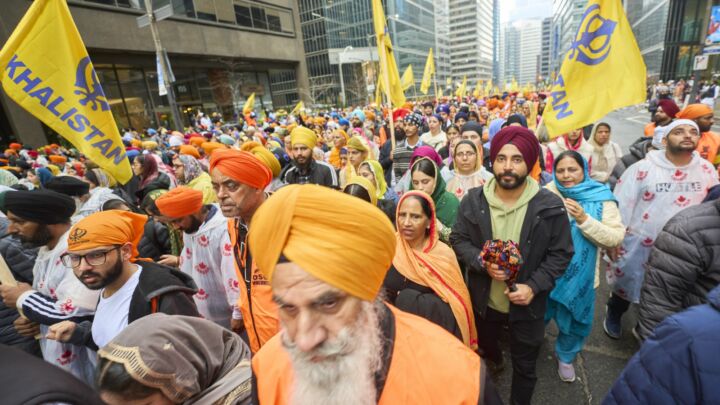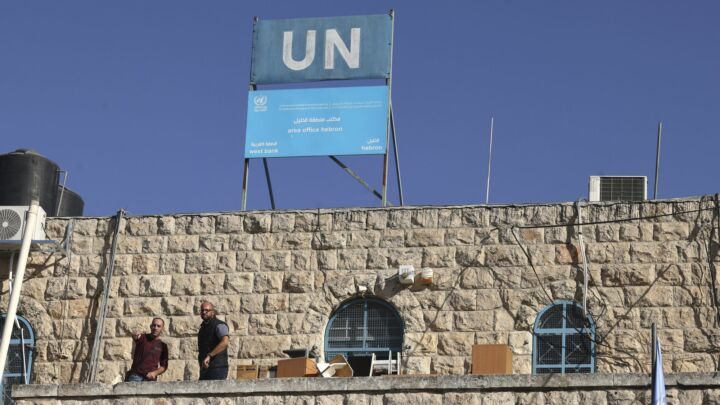The SARS farce
Fear, not disease, has put Hong Kong in quarantine.

Want to read spiked ad-free? Become a spiked supporter.
‘I don’t think Hong Kong is any safer than where I am now.’ So wrote a tabloid journalist from Hong Kong who is currently stationed in…Kuwait. But is SARS really on a par with war?
The outbreak of SARS, Severe Acute Respiratory Syndrome, in China and surrounding regions has caused widespread panic. SARS is a pneumonia-like virus that proves fatal in about four percent of cases, according to the World Health Organisation, usually in people with ‘underlying’ medical conditions such as diabetes or a weakened immune system. At the time of writing, 2200 people around the world have been infected with SARS, and 78 have died. The majority of cases (1190) have been in China, with smaller outbreaks in Hong Kong, Singapore, Vietnam and Thailand. There have been 58 cases and six deaths in Canada.
How lethal is the SARS outbreak? Here in Hong Kong, it appears that a small but real problem is being blown out of all proportion, with the result that what could have been a minor public health problem risks becoming a much more serious one. To date, 708 people have been admitted to hospital with pneumonia symptoms, 89 of whom have been discharged – that is, cured. The number of people with symptoms has more than doubled in the past week, and tragically 16 people have died, eight of them in the past 10 days (2).
These numbers may seem alarming, but it is worth bearing in mind that Hong Kong has a population of 6.72 million, according to the 2001 census (3). For the purposes of comparison, the number of people with SARS is slightly higher than the number with tuberculosis and a great deal higher than the number with leprosy (4). The leprosy comparison might seem like an overreaction – but walking the streets of Hong Kong, you could be forgiven for thinking we are living through an outbreak of bubonic plague.
In recent days, the streets of this generally crowded city have been half empty. Of those ‘brave’ enough to venture out, about a third are wearing face masks. There have been some bizarre sights: groups of people with half wearing masks and half not; individuals slipping their off masks to puff on a cigarette. But could all this mask-wearing be a sensible precaution?
The Hong Kong government seems unable to make up its mind. On one of its websites, it tells people that only those who already have symptoms or risk coming into contact with SARS need to wear a mask – but it then says: ‘The general public may wear a face mask for self protection.’ (5)
Many have been wearing masks designed to keep out pollution-sized, rather than virus-sized, particles. Such masks become ineffective in about five minutes, due to the high humidity of the sub-tropical climate. It’s difficult to avoid the conclusion that the face mask phenomenon is doing little to protect those who might be at risk from SARS, but much to stoke the climate of fear. But all is not lost – matching mask and tie sets and specially designed fake Louis Vuitton masks are already available for the fashion-conscious.
What other advice are we getting from government officials? ‘Maintain good personal hygiene’, they tell us – advice that sounds more patronising than useful. The government also advises that you cannot catch SARS by handling money or going swimming and…that’s about it really.
Some of the government’s other anti-SARS action is a little more alarming. The authorities have set about organising a street-cleaning campaign, evidently to show us that they are doing something about the infection. But this sends out a very mixed message – implying that the infection is not only transmitted via contact with other people’s secretions, but that it is somehow lingering all around us.
The government is also quarantining people who are thought to have the disease, but who are not showing symptoms. That might seem sensible – if it was a complete quarantine. Instead, those under quarantine have to report to a doctor once a day. In short, they are actually encouraged to travel through the city to one of only four designated medical centers, potentially exposing people to the disease that they may or may not have.
The government spread further panic by closing down all schools for 10 days. And this action, too, was carried out clumsily, with little reassurance to the panicked public. On 25 March, Hong Kong’s secretary for education and manpower Arthur Li Kwok-Cheung said, ‘The complete suspension of schools does not reduce the risk of contracting atypical pneumonia’. Two days later, on 27 March, he said, ‘Now is the time to close schools’ – by which point 18 university students and eight school pupils had shown symptoms of SARS (6).
In the SARS debacle, the government has also disrupted Hong Kong’s already weak and heavily tourism-dependent economy. The government clearly thinks that tourists are as slobby as the locals, advising them to ‘maintain good personal hygiene’ (7). It also advises them to avoid ‘overcrowded places’ – and for anyone who has yet to visit ‘Asia’s World City’, I should explain that, taken seriously, this piece of advice would preclude a tourist from going just about anywhere. The government requires tourists to fill in health declarations, which is neither reassuring nor welcoming. The impact has been immediate: the airport has been deserted.
So a few weeks into the SARS ‘crisis’, we have had massive disruption to daily life and the economy without a shred of reassurance from the government. All over a disease which the government admits usually responds to medication.
The panic has escalated to such an extent that on 1 April 2003 a 14-year-old boy posted a hoax message on the internet claiming that the entire territory of Hong Kong was to be quarantined, which resulted in a wave of panic-buying. This occurred after the government announced a quarantine of a housing block, but allowed enough time for many residents to escape. Whether or not these residents have the infection, the perception now is that they probably do and are probably spreading it around. Some residents have been sent to specially set aside holiday camps – which means that, if they do have the infection, they could potentially infect each other.
I’m no doctor, but my diagnosis of Hong Kong’s ailment is diarrhea rather than a serious outbreak of atypical pneumonia – the place is shitting itself.
Mischa Moselle is a Hong Kong-based journalist.
Read on:
Viral fears, by Stuart Derbyshire
(1) South China Morning Post, 29 March 2003
(2) Latest Figures on Atypical Pneumonia, Government of Hong Kong Information website
(3) Hong Kong Population Projections 2002-2031, Census and Statistics Department
(4 ) No. of Notifications for Notifiable Infectious Diseases in 2003, Government of Hong Kong Information website
(5) See Atypical Pneumonia – Frequently Asked Questions, Government of Hong Kong Information website; and Wearing Facemask
(6) South China Morning Post, 29 March 2003
(7) Atypical Pneumonia – Frequently Asked Questions, Government of Hong Kong Information website
Celebrate 25 years of spiked!
A media ecosystem dominated by a handful of billionaire owners, bad actors spreading disinformation online and the rich and powerful trying to stop us publishing stories. But we have you on our side. help to fund our journalism and those who choose All-access digital enjoy exclusive extras:
- Unlimited articles in our app and ad-free reading on all devices
- Exclusive newsletter and far fewer asks for support
- Full access to the Guardian Feast app
If you can, please support us on a monthly basis and make a big impact in support of open, independent journalism. Thank you.






Comments
Want to join the conversation?
Only spiked supporters and patrons, who donate regularly to us, can comment on our articles.